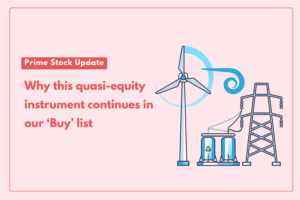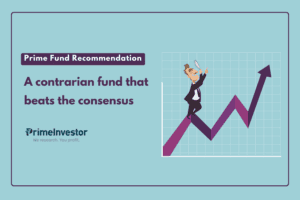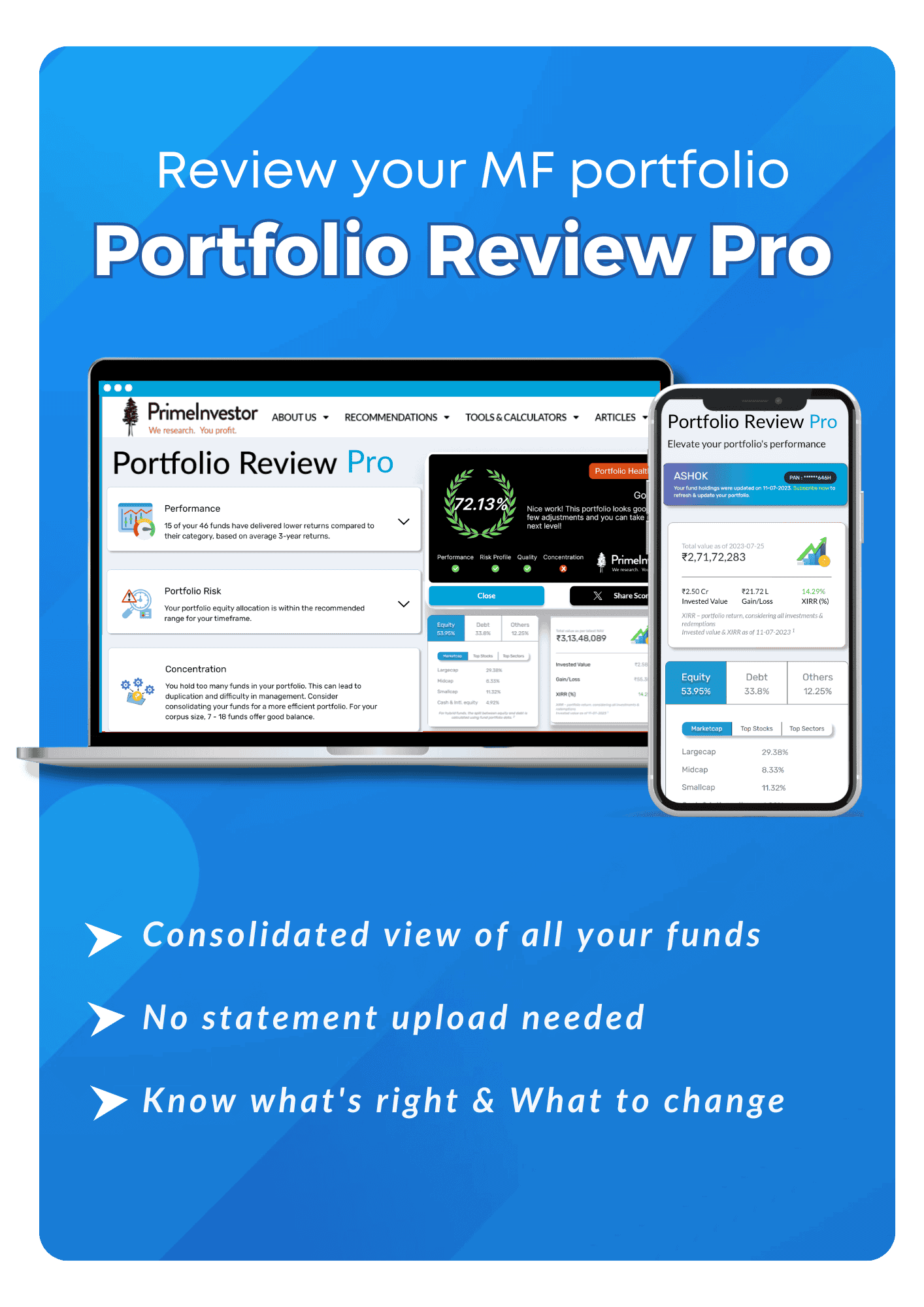The Indian investor has seen an enormous expansion in the menu of regulated products available to her in recent years. These range from treasury bills and central government securities that can be bought on RBI’s Retail Direct platform to byte-sized equity portfolios managed by star managers on smallcase.
But some folks still have a fatal fascination for ‘better-than-FD’ returns advertised by unregulated entities – whether it is cryptocurrency exchanges offering interest rates of 12-14% on staking one’s crypto holdings, or peer-to-peer lending platforms promising you a 14% return from becoming part of a lending club. Informal entities ranging from unregistered chit funds run to the street corner jeweller tempt you to ‘deposit’ money with them promising high returns.

Investors get lured by such ‘assured return’ schemes because they’d like to improve upon the low returns offered by vehicles like bank deposits or because they’re uncomfortable with market volatility. But they’re unaware that when they switch from regulated products to unregulated ones, they’re actually jumping from the frying pan into fire as they’re putting their principal at risk.
India has a long history of scamsters and ponzi scheme operators making away with investor money, after disguising their scams as ‘deposits’ promising high ‘assured’ returns. Before you commit your hard-earned money to any entity wooing you with assured returns, do run this checklist to identify deposit scams from the real ones. It will help you decide if you’re dealing with a regulated product or a pie-in-the-sky one.
When choosing market-linked vehicles like mutual funds for our portfolio, we ask probing questions about where the money is being invested and how the fund manager proposes to generate returns. But the moment any entity promises “guaranteed’ returns we automatically skip any further due diligence.
#1 Is it a regulated deposit-taker?
In recent weeks, many crypto-exchanges around the world have gone bust and announced that they are barring withdrawals by investors. This has led to a furore on social media with investors blaming the exchanges and social media influencers for leading them up the garden path. These entities peddled crypto-currency ‘deposits’ as a ‘safe, high-return’ alternative to FDs. But the truth is that crypto-currency exchanges are not authorised by Indian laws to accept deposits in the first place, and have no legal right to promote their pledging products as deposits. As a result, their investors don’t have any legal recourse to recover their money.
When you deposit money with any entity, you’re effectively lending to it. Therefore, the first check you need to run is whether it is authorised to take deposits and is registered with the appropriate government authority. Under Indian laws, there are only six types of entities who can solicit deposits from the public.
These are commercial and co-operative banks licensed by RBI, select NBFCs and Housing Finance Companies which are approved by RBI to raise public deposits, companies that are eligible under the Companies Act to raise public deposits and registered co-operative credit societies and multi-State co-operative credit societies. The last two entities can only accept deposits from their members.
You can find:
- the list of RBI-licensed commercial and co-operative banks here
- And the list of NBFCs allowed to raise public deposits here
While there is no ready-made list of companies allowed to raise deposits, all such companies are required to issue a public advertisement in newspapers. To ensure that these entities don’t go overboard in raising public money, RBI and the Ministry of Corporate Affairs lay down stringent criteria on the total amount of deposits they can accept based on their net worth and capital.
If an entity that is raising ‘deposits’ from you doesn’t figure in any of these lists, you can be sure that it is an unregulated entity and is not subject to any of the laws that have been framed for depositor protection.
#2 Is it a collective investment scheme?
When it comes to conning the unsuspecting public, Indian scamsters hit upon many ingenious ways to circumvent the law. In the early nineties, the Indian market suddenly saw the mushrooming of unlisted entities promising astronomical returns from a variety of money-pooling schemes.
Entities such as Pearl Agrotech (PACL) collected ‘advances’ from crores of investors promising to acquire agricultural land in the Southern States, which would pay them hefty ‘interest’. Others pooled money to grow teak trees and plant fruit orchards that would pay rich dividends over time. Pancard Clubs collected crores towards ‘holiday package’ schemes where investors could earn hefty interest from part ownership of resorts and properties. Needless to say, none of these entities made good on their promises. In 2017, SEBI initiated action against 196 such Ponzi operators and introduced its Collective Investment Scheme (CIS) regulations to regulate them. Under the CIS law, any scheme or arrangement that pools over Rs 100 crore of funds from investors is a CIS and has to compulsorily register with SEBI. . Read more on the scams run by CIS here.
If the entity which is collecting money from you is not regulated by RBI or MCA, check if it is a SEBI registered CIS in this link.
If you find that the entity raising money from you is neither a regulated deposit-taker nor a SEBI-registered CIS, you can safely assume that it is illegal and give it a wide berth.
#3 What’s the business?
When choosing market-linked vehicles like mutual funds for our portfolio, we ask probing questions about where the money is being invested and how the fund manager proposes to generate returns. But the moment any entity promises “guaranteed’ returns we automatically skip any further due diligence on it.
Today, there are fintech platforms that promise investors better-than-FD returns through fractional ownership of commercial real estate, leasing of assets, factoring of receivables etc. The question you need to ask in such cases is, if these legitimate activities can generate such high ROI why institutional investors aren’t queuing up to fund them.
In fact, it is when you are relying on an entity for ‘assured’ returns that you really need to question where your money is going and whether the business can generate the kind of returns promised. Often, understanding the business can alert you to the high risk you’re taking on.
Take the case of peer-to-peer lending platforms, which are RBI-regulated entities. Though some P2P platforms promote their products as offering 2x or 3x FD returns, there’s a world of difference between depositing your money with a bank and lending it on a P2P platform. On the latter, you’re essentially giving out an unsecured loan to a stranger who’s approached you through an app. Folks who borrow without collateral from a P2P platform at high rates, instead of from a bank or NBFC are likely to be those who don’t have top-notch credit scores or direct access to credit from regulated entities. The P2P platform cannot hold your money or lend it out, it is only an intermediary which puts you in contact with an individual borrower. Once you understand this, you will automatically correlate the high returns you stand to get on your P2P loan with the high risk you’re taking on, by lending to a needy borrower about whom you know very little.
Everyone knows that in India, many realty and jewellery businesses carry a high ‘grey’ component and are in a perpetual working capital crunch. This is why jewellers’ chit schemes (they aren’t registered chits) that promise to redeem your money in gold and or ‘deposit’ schemes from realtors which promise to pay high interest rates on advance payments are so prone to default.
A related point is that, if you simply don’t understand where your money is being put to use or what business the entity is in, it is best to avoid it.
Today, there are fintech platforms that promise investors better-than-FD returns through fractional ownership of commercial real estate, leasing of assets, factoring of receivables etc. The question you need to ask in such cases is, if these legitimate activities can generate such high ROI (return on investment) why institutional investors such as mutual funds, REITs, Invits or Alternative Investment Funds aren’t queuing up to fund them. If the business is unable to raise money from mainstream sources and needs to turn to retail investors for debt, you can be sure it’s a proposition that puts your capital at risk.
#4 Who’s responsible for the guarantee?
When comparing assured return schemes from unregulated entities to bank deposits, many investors don’t stop to think about who’s responsible for fulfilling the promise. An assured return isn’t worth the paper it’s printed on, if it is given by a fly-by-night operator.
When a bank or RBI approved NBFC accepts public deposits, there are several safeguards to ensure that the entity can repay them. Banks are subject to SLR and CRR requirements, which require them to mandatorily park about a fourth of their deposits with RBI to meet repayments. If any commercial or co-operative bank in India defaults, depositors are entitled to get back at least Rs 5 lakh of their deposits under the deposit insurance rules (Read this RBI FAQ to know all about this).
RBI also caps the amount of deposits banks or NBFCs can raise relative to their net worth and enforces stringent liquidity norms that require them to keep a certain proportion of their assets in liquid form. In the case of crypto deposits, the ‘promise’ of high returns wasn’t worth anything because it was unenforceable under Indian laws. In the case of P2P lending, regulations clearly forbid the platform from assuming any credit risk. In the digital lending era, there can be many degrees of separation between the app or fintech player who’s promoting a scheme to you, and the one who’s ultimately responsible for repaying the money. In the case of digital lending apps or covered bonds for instance, you need to peel many layers of the onion before you can identify the entity you’re lending to. (Read our earlier analysis of how covered bonds work here)
#5 Whom do you complain to?
All financial market regulators in India today have forums through which they screen investor grievances and take action against companies or regulated entities that give investors the short shrift.
- SEBI offers the SCORES mechanism to file complaints against entities under its jurisdiction.
- RBI runs a banking ombudsman scheme which it plans to extend to NBFCs and credit bureaus as well.
It is best that you ascertain the forum for consumer complaints before committing your money to any entity. If you are unable to file a complaint with the above entities or don’t get a satisfactory response, you can log into Sachet ( https://sachet.rbi.org.in/Home/CentralActs/17?Name=Ministry%20of%20Finance) a joint online forum created by the key financial market regulators and the States to crack down on illegal deposit and money pooling schemes. Sachet also offers a bird’s eye view of all the extant regulations designed to protect retail investors from ponzi and unregulated money pooling schemes.
#6 Are the returns realistic?
If you don’t have the time or the knowledge to pore over regulator’s websites or dig deep into an entity’s business, you can fall back one just a single, simple check to know if the fixed return scheme you’re giving your money to, is a scam or a genuine one.
Simply evaluate its promised returns against the prevailing interest rate on the safest instrument in the economy – which is the government security. Today, for instance, a 3-year government security is offering you a 6.8% yield. This is a good place to check current yields on g-secs.
The higher the returns ‘promised’ by any entity over and above this, the higher the risk to your principal.
To give you an idea of what a ‘high’ rate is, AAA rated companies – the safest companies in the bond market- borrow money at roughly 40-50 basis points more than the g-sec yield. Companies rated low investment grade may borrow at 300-400 basis points more (roughly 9-11%). You can therefore imagine the level of default risk that comes with an entity that offers 12-14% on your investment. In the world of fixed income investing, high rates always coexist with the risk of default. So the next time you’re tempted by a scheme you don’t understand, remember that return of capital, for the fixed income investor, is always more important than return on capital!









7 thoughts on “6 ways to identify deposit scams”
Excellent article !!
Brilliant Article !!
Thank you!
Brilliant Article !!
Need to print such articles on Pg 3 news papers, where m asses read it most.
🙏 that’s why we have made it free
Nicely Explained to caution us!
Comments are closed.